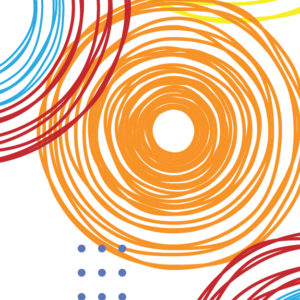Disability Theology Touchpoints
Like the broad spectrum of disabilities that are represented in everyday life today, Jesus’s response to people with disabilities varied greatly, which means the theology around disability is nuanced and contextual. But here are some theological perspectives that touch on key disability issues.
Sin and disability
Although many dismiss the connection of disability to sin as outdated or imaginary, the cause-and-effect implications remain embedded in the church’s worship in subtle ways. Blindness, in particular, is used metaphorically to indicate living in a state of sin, or to denote a pre-Christian state, particularly in hymns. Think of the stanza from “Amazing Grace”:
“I once was lost but now am found, was blind but now I see.”
Against a theology of blame, there is no room for those who would connect disability with sin. Jesus’s disciples, when confronted with a man born blind, assumed that someone must have sinned to cause this state of affairs (John 9:2); Jesus rejected the premise. We cannot deny that sin’s effects are far-reaching—evident in every life and throughout human societies—but in keeping with Christ’s own ministry, the church must say loudly that disability is not a divine punishment.
Curing, healing, and welcoming
During Jesus’s ministry, some experienced miraculous healing as “the blind receive their sight and the lame walk, lepers are cleansed, and the deaf hear …” (Matthew 11:5 ESV). Yet such healing did not happen to everyone, and a one-sided emphasis upon healing will have the effect of marginalizing and stigmatizing people with disabilities who have not experienced a cure.
In welcoming people with disabilities—sometimes considered “strangers” in our midst—the church’s motive should not be to “fix,” cure, heal, or make them become like everyone else. In fact, welcoming the stranger is likely to make some feel ill at ease, calling for a hospitality marked by respectful negotiation that honors the person’s particular needs without making a public display.
Instead of focusing on a “fix” or cure, loving communities of faith will encourage a different kind of healing: helping members with disabilities develop courage for what life brings, purpose and meaning in the midst of disability, openness to change, and a sense of wellness that comes from a connection with God and one another.
For churches seeking to engage people with disabilities, an appreciation for who they are and what they can offer is essential. Christian identity—for people with and without disabilities—does not arise from what we can and cannot do, but from our union with Christ and with Christ’s church.
God’s providence, sovereignty, and redemptive purposes
God’s redemptive purposes speak the final word, as Jacob’s favored son Joseph assured his brothers when they feared Joseph’s revenge for selling him into slavery (Genesis 50:20).
Whether Christians experience disability as an intrusion or as part of their identity, they often bump up against ultimate and distressing questions about a loving, omnipotent God’s role and responsibility. Orthodox Christian belief insists that nothing happens to us apart from God’s will.
Emphasizing God’s redemptive purposes puts a helpful focus on God’s sovereignty. When our “Why?” questions go unanswered or we fail to comprehend what God is up to, we still know that God’s promise is to bring something good out of heartache, difficult circumstances, or unimaginable situations. Such assurance stops short of explaining ahead of time what God has in store or why he permits events we would not choose. It also stops short of equating God’s redemptive purpose with God’s decree or God’s will in a mechanical, deterministic fashion.
Some may find it helpful to focus on God’s providence rather than dwelling on “Why?” questions. Others may be comforted by knowing that God is with us in the midst of our questions and doubts. God does not love all of our problems, but his Spirit remains with us to provide what we need most.
Disability and the resurrection
Traditional views of our future life in Christ—when our bodies are resurrected—have disregarded the possibility of a disability. We expect that people with disabilities will be as able-bodied as everyone else, showing no traces of the disabilities that limited their life on earth (Revelation 21).
Yet theologian Amos Yong cites several biblical texts that suggest our embodied existence in the resurrection might include imprints of disability:
- The scars in the hands and the side of Jesus’s resurrected body (Luke 24:37-39; John 20:19-28).
- The presence of people with impairments in the Parable of the Great Banquet (Luke 14) and in several prophetic texts (Jeremiah 31:8-9; Micah 4:6-7; Zephaniah 3:19-20).
- The apostle Paul’s description of the resurrection (1 Corinthians 15:42-44) and his “theology of weakness” (2 Corinthians 4:7-12; 12:7-10).
Just as the resurrected body of Jesus still showed its wounds, might our resurrected bodies still bear the marks of our disabilities—not as limitations on our existence before God, but as the traces of divine grace, the signs of our deepest union with the Christ who shared our sufferings?
Suggested resources:
- “A Church of All and for All,” an interim statement from the World Council of Churches Ecumenical Disability Advocates Network
- Disability, Providence, and Ethics: Bridging Gaps, Transforming Lives, by Hans Reinders
- Vulnerable Communion: A Theology of Disability and Hospitality, by Thomas Reynolds
Everybody Belongs, Serving Together is a collaboration of RCA and CRCNA Disability Concerns, Christian Horizons, and Elim Christian Services.
All rights reserved. This publication may be reproduced in whole or in part without permission, provided the source of the information is cited and the reproduction is not represented as an official version of the information produced. For all other uses, contact Reformed Church Press for permission. (questions@rca.org; 616-698-7071)
